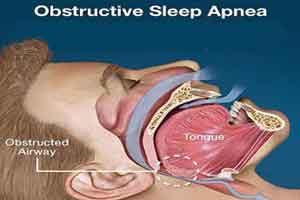- Home
- Editorial
- News
- Practice Guidelines
- Anesthesiology Guidelines
- Cancer Guidelines
- Cardiac Sciences Guidelines
- Critical Care Guidelines
- Dentistry Guidelines
- Dermatology Guidelines
- Diabetes and Endo Guidelines
- Diagnostics Guidelines
- ENT Guidelines
- Featured Practice Guidelines
- Gastroenterology Guidelines
- Geriatrics Guidelines
- Medicine Guidelines
- Nephrology Guidelines
- Neurosciences Guidelines
- Obs and Gynae Guidelines
- Ophthalmology Guidelines
- Orthopaedics Guidelines
- Paediatrics Guidelines
- Psychiatry Guidelines
- Pulmonology Guidelines
- Radiology Guidelines
- Surgery Guidelines
- Urology Guidelines
Diagnosing Obstructive Sleep Apnea: ACP guidelines

Obstructive sleep apnea (OSA) is caused by repetitive obstruction of the upper airway during sleep, resulting in hypopnea (reduced airflow during sleep) or apnea (complete airflow cessation during sleep). Persons with OSA may experience loud snoring, oxygen desaturation, frequent arousals, and disruption of sleep. Disrupted sleep can result in hypersomnolence and impaired concentration during the day , increased probability of motor vehicle and other accidents, and decreased quality of life. Although evidence establishing a causal relationship is not currently available, OSA is associated with adverse clinical outcomes, including cardiovascular disease; hypertension ; cognitive impairment and metabolic abnormalities, such as type 2 diabetes ; and an increased risk for postoperative cardiac and respiratory complications
Considerable controversy surrounds the type and level of respiratory abnormality, the presence and type of signs or symptoms, and the most appropriate sleep monitoring device for diagnosing OSA. American College of Physicians issued Clinical Practise guidelines for the Diagnosis of Obstructive Sleep Apnea in Adults in August 2014. The major recommendations of the guidelines include
Recommendation 1: ACP recommends a sleep study for patients with unexplained daytime sleepiness. (Grade: weak recommendation, low-quality evidence)
Recommendation 2: ACP recommends polysomnography for diagnostic testing in patients suspected of obstructive sleep apnea. ACP recommends portable sleep monitors in patients without serious comorbidities as an alternative to polysomnography when polysomnography is not available for diagnostic testing. (Grade: weak recommendation, moderate-quality evidence)
You can read the full guidelines by clicking on the following link:-
http://annals.org/article.aspx?articleid=1892620
Considerable controversy surrounds the type and level of respiratory abnormality, the presence and type of signs or symptoms, and the most appropriate sleep monitoring device for diagnosing OSA. American College of Physicians issued Clinical Practise guidelines for the Diagnosis of Obstructive Sleep Apnea in Adults in August 2014. The major recommendations of the guidelines include
Recommendation 1: ACP recommends a sleep study for patients with unexplained daytime sleepiness. (Grade: weak recommendation, low-quality evidence)
Recommendation 2: ACP recommends polysomnography for diagnostic testing in patients suspected of obstructive sleep apnea. ACP recommends portable sleep monitors in patients without serious comorbidities as an alternative to polysomnography when polysomnography is not available for diagnostic testing. (Grade: weak recommendation, moderate-quality evidence)
You can read the full guidelines by clicking on the following link:-
http://annals.org/article.aspx?articleid=1892620
Next Story
NO DATA FOUND

Disclaimer: This site is primarily intended for healthcare professionals. Any content/information on this website does not replace the advice of medical and/or health professionals and should not be construed as medical/diagnostic advice/endorsement or prescription. Use of this site is subject to our terms of use, privacy policy, advertisement policy. © 2020 Minerva Medical Treatment Pvt Ltd